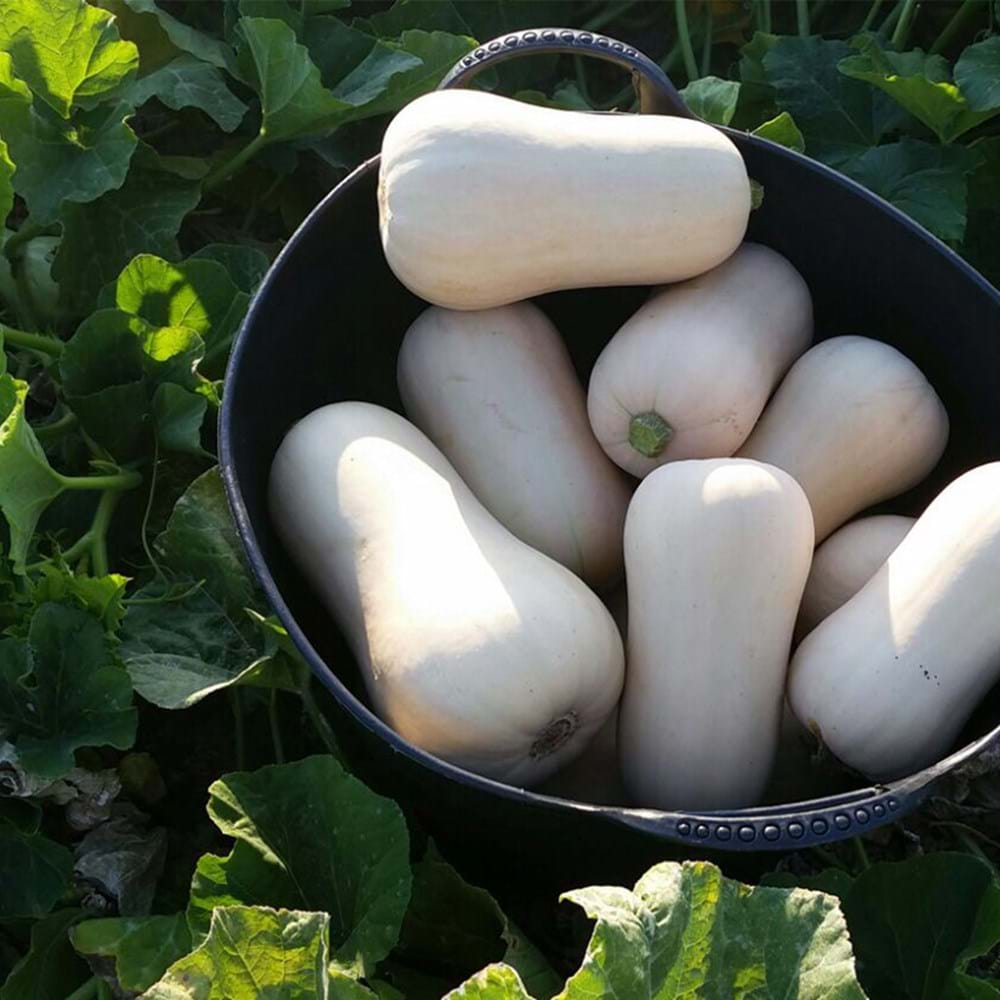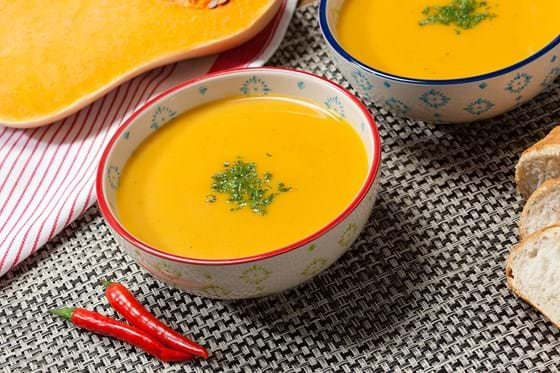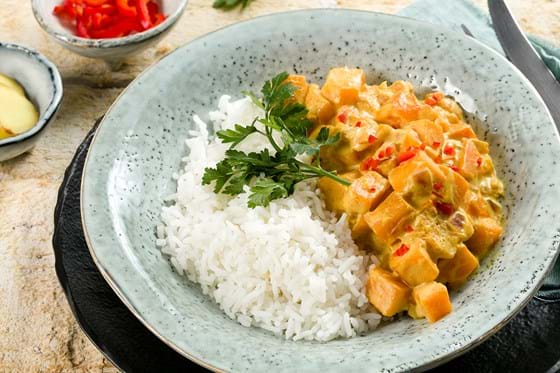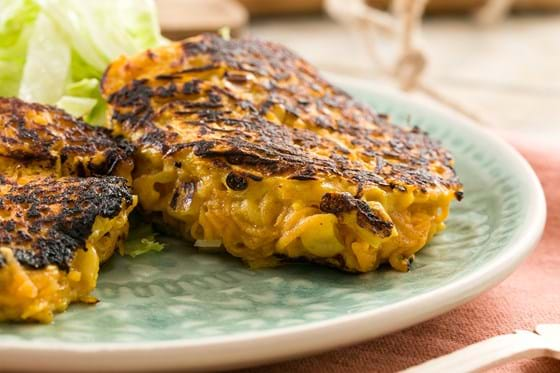Butternut squash
The autumn staple in the kitchen
- Directly to...
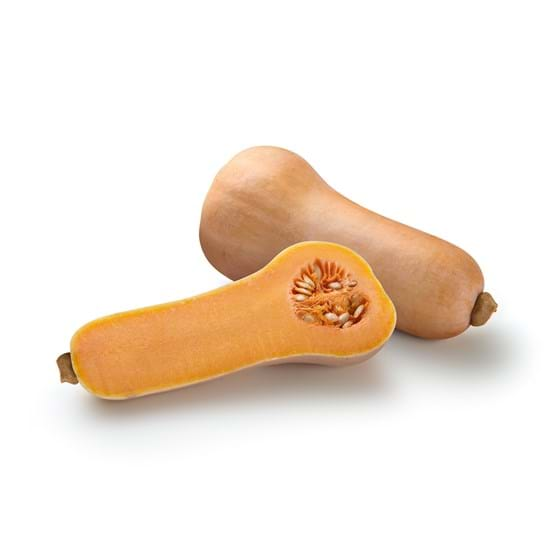
As soon as autumn arrives you can see them everywhere: recipes for pumpkin soup are back on trend. This orange pumpkin, with its distinctive bottle shape, is still mainly associated with the final months of the year. Which is a real shame, as with growers in various countries you can now enjoy EAT ME butternut squash all year round. Just as well, because the soup pan is not the only tasty destination for this pumpkin. Bulk out the veg content of your pasta dishes. Add pumpkin to a curry or risotto. And roast in the oven for a tasty treat.
Melon and cucumber are well-known relatives. Butternut squash has cream to yellow skin that is soft to the touch. The longer it ripens, the more intense the colour. The flesh is bright orange with a nutty taste. At EAT ME you will find the most delicious variety available: the Coquena Argentum, the queen of the butternut squashes.
Recipes with butternut squash
Yes, the famous pumpkin soup. It is probably the most popular way to use butternut squash but try it in a tasty vegetable curry. It is also a great vegetable to grill on the barbecue. And if you do use it in a soup - and why not - then simply add a few rawit chillies to turn up the spice dial for a different dimension!
Preparation
Butternut squash can be used peeled and unpeeled. In both cases, give it a quick rinse first. Remove the seeds. The seeds are edible, but they should be roasted first. You can cook, roast or bake pumpkins in the oven.
How to use butternut squash in the kitchen?
- Cooking
- Grill
- BBQ
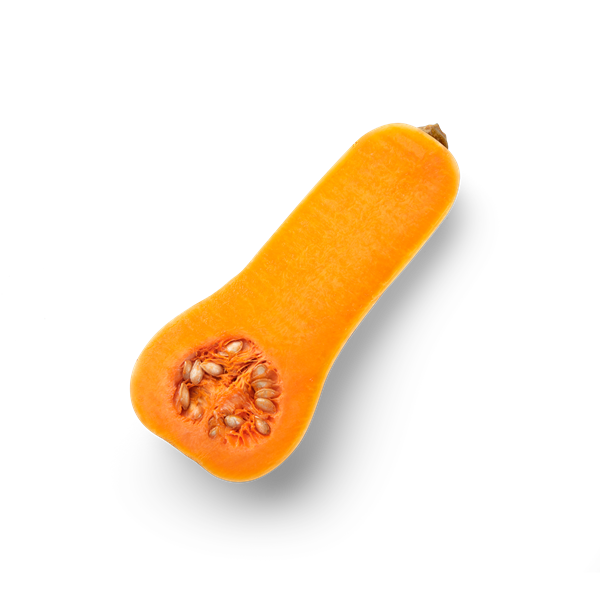

Storage advice
EAT ME butternut squash will keep well for longer outside the fridge. Have you already cut the squash? In that case, it's best stored in the fridge.
Nutritional values per 100 grams
Butternut squash is full of fibre. And it's also a source of vitamin C. That vitamin has a very notable property: Vitamin C is good for your memory. That's something you are not likely to forget if you eat enough butternut squash!
Where does butternut squash come from?
Butternut squash is grown in South Africa, Honduras, Brazil, Spain and Portugal. The fruits of this crop grow on the ground. In regions with cold nights, plastic film is placed over the plants to protect them. Harvesting starts around 3 months after planting.
